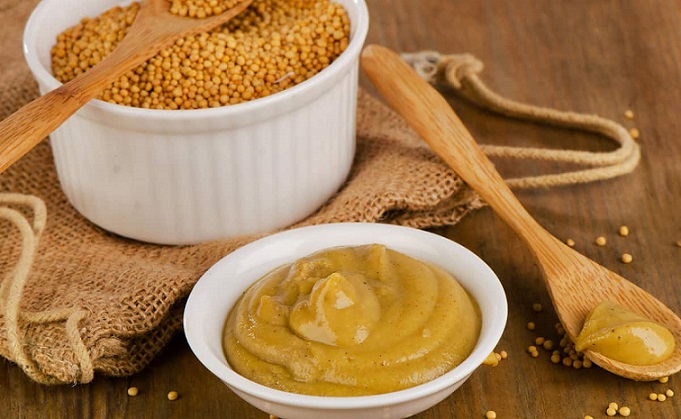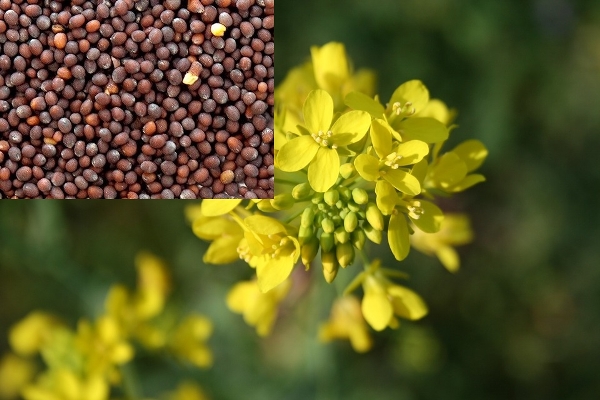Mustard
Versatile Plant With Health Benefits
Mustard is a highly versatile plant, which lends its fiery flavour to many dishes and condiments through the use of it as both a herb and a spice. Botanically speaking, mustard is a member of the brassica family along with vegetables such as cabbage and broccoli, and as such it contains a high level of sulphur which is responsible for the heat we taste in it, especially in the seeds. Mustard can be grown either for salad use or for its seeds, which are the main ingredient of the table condiment which most people think of when they hear the word 'mustard'. The greens of the young plant can be eaten in a salad, and have a similar taste to cress, which it is closely related to.
The leaves may be a little strong for use on their own, but make a great combination with other salads of character such as rocket, baby spinach or watercress. Most of us, however, are more familiar with mustard in the guise of a potently hot yellow paste which we use either in cooking or as a condiment - most famously of course on such everyday foods as hot dogs and burgers. Many kinds of table mustard are available, ranging in intensity from the relatively mild American mustard to the sinus- clearing English variety. German and French mustards also have their own distinctive characters, and even within France there are several types available - contrast the standard, brown-colored French Mustard with the milder, creamier, paler Dijon variety.
Table mustards are made by grinding down the seeds of the mature mustard plant and mixing the results with a little liquid, usually vinegar, along with a seasoning of salt and pepper, and maybe a little sugar to take the edge off the heat. The strength of the finished mustard depends in part on what kind of seeds are used. Black, yellow and white varieties are available, each with different strengths and characteristics, and of course there are many different breeds of mustard plant grown, and each one will have a slightly different flavor. Many people think that they don't enjoy the taste of mustard, and it's true that it can be something of an acquired taste. If you tried it as a child and were put off for life, why not give it another go now that you have a more mature and developed sense of taste?
FrizeMedia Ghana SEO SEM Digital Marketing Proposal
The Best And Top Digital Marketing And SEO Services In Ghana
Mustard also has medicinal uses, and has traditionally been made into a poultice and applied to the skin to relieve inflammation, and also in the treatment of bronchial problems such as chest colds. If you're tempted to use it in this way, then use a mixture of 10% mustard to 90% flour, and mixed to a paste with water. Be sure though to avoid applying it to sensitive areas, and take great care to avoid the eyes! Finally, mustard is widely used agriculturally, both as fodder for livestock and as a 'green manure' which can be grown quickly and then plowed back into the soil to enrich and fertilize it in preparation for growing the main crop the following spring.
Cooking Classes For Adults And Kids
Hot And Spicy Szechwan Cuisine
Browse All Our Informative Topics
InternetBusinessIdeas-Viralmarketing Home Page
Tweet
Follow @Charlesfrize












New! Comments
Have your say about what you just read! Leave a comment in the box below.